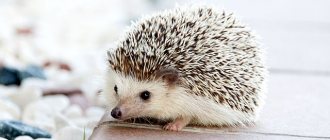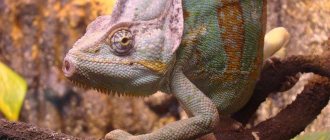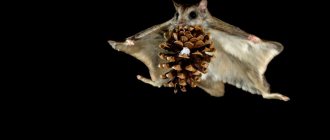European marsh turtle and its maintenance at home
For an animal such as the European marsh turtle, maintenance can be organized at home if you know certain rules. But to do this, you need to know what a marsh turtle is and what care it needs at home. Therefore, before getting such a pet, you need to familiarize yourself with the characteristics of its life and needs. Also, it must be taken into account that being kept at home cannot be compared with a free life, no matter how ideal it may be. This means that the marsh turtle at home usually does not live as long (despite the absence of the threat of death from predators) and is smaller in size. But it is possible to organize optimal conditions for it.
The basic needs of this reptile at home:
Although it is possible to provide a quality home for an animal such as the European Swamp Turtle, you need to think carefully before making a decision. Deprivation of its natural habitat is difficult, especially if the animal first lived in the wild. Therefore, it is not worth catching these animals.
For a pet like a marsh turtle, care requires taking into account the peculiarities of its behavior.
They have the ability to quickly adapt, so they can easily transfer to an aquaterrarium
It is very important that the animal’s new “home” has a dark place to rest.
They are distinguished by high mental abilities. The reptile quickly understands that the owner is feeding them, so it reacts to his appearance. However, you should be careful when feeding. Turtles tend to be cunning; they bite and scratch. That's why you shouldn't let children touch them. It is also not advisable for adults to frequently handle such pets. Sometimes there are individuals who are not at all characterized by aggression and who do not avoid people or hide from them under their shells. But most often the behavior of these animals is unpredictable.
What to feed a marsh turtle at home
Living in the wild, the marsh turtle chooses its own food, but when it is at home, care and feeding fall on the owner. Therefore, he needs to know what the swamp turtle eats.
The European marsh turtle, which is kept at home, must eat properly. Otherwise the animal will die. Her diet must be balanced so that the pet receives all the necessary nutrients. Feeding the reptile must be done in water.
The main types of food for her at home:
As these animals grow older, plant foods become necessary, for example:
Young marsh turtles do not particularly need food of plant origin. They grow actively, so they need animal food.
The frequency of feeding depends on the age of the pet. Young turtles need food more often, so they should be fed daily. Adults can go several days without food, so they are fed 2 or 3 times a week.
Reproduction in captivity
The European marsh turtle, which is kept at home, has every chance of breeding
In this case, it is very important that the marsh turtle receives proper maintenance and care. It is necessary that during pregnancy the temperature regime be observed (about 2 degrees higher than usual)
It is also important to have a sufficient amount of calcium-rich food. Adequate UV light must be provided to allow nutrients, especially vitamin D, to be absorbed. During this period, females should be kept separate from males.
Conditions for masonry should be prepared. It is recommended to use a container placed in the aquaterrarium with a mixture of sand and vermiculite. If the size of the terrarium does not allow this, you can place the female in a separate box with soil, the depth of which should be at least 12 cm. After the female lays eggs, the clutch should be transferred to an incubator. For incubation, you need to maintain a temperature of 28-30 degrees and air humidity of 80%. The period before the birth of babies depends on compliance with these conditions and can last 2-3 months.
European marsh turtle
Despite its exotic appearance, this freshwater reptile can hardly be called rare, since its range extends from the Pyrenees to the middle of the Eurasian continent, affecting forests and forest-steppe zones, mainly in its southern part. The favorite habitat of the European turtle is natural reservoirs, the waters of which are prone to stagnation, since turbulent streams and strong currents have a frightening effect on this animal.
A river turtle will always prefer water to land, and that is why it rarely moves away from its permanent habitat to an impressive distance (usually we are talking about a range from 500 meters to 7 kilometers). Spending most of their time in water, these reptiles try to surface for a breath of fresh air every twenty minutes, but there have been cases when they spent up to two days in a row at a depth, which is unique in itself. And this point should definitely be taken into account by potential breeders who dream of keeping such a pet at home.
https://youtube.com/watch?v=5KM1G0OB8tA
Physical characteristics and lifestyle
Inconspicuous turtles with a dark rounded shell and a very long tail, which often takes up a third of the animal’s entire body, cannot boast of large sizes. Thus, the length of the carapace, which refers to the dorsal shield of a turtle shell, in this animal rarely exceeds 25 centimeters with a maximum weight of about one and a half kilograms. That is, we are talking about a fairly “compact” animal for keeping at home.
But, despite such small dimensions, the river turtle can boast of fairly strong paws with very tenacious claws, with which it literally tears apart dense river and swamp vegetation in search of food. Turtles also have to use their trained limbs if they suddenly notice a potential threat. So, barely noticing a person or a larger animal, these babies almost instantly flop into the water, deftly hiding in algae or even burying themselves in river silt.
Contrary to popular belief, river turtles are not nocturnal, but diurnal, despite the fact that the highest peak of their activity occurs precisely in the morning hours, when nature is just beginning to wake up. As for the night, at this time of day animals prefer to sink to the bottom of the reservoir and sleep there until the morning, only occasionally surfacing to replenish their oxygen reserves.
However, this turtle cannot be called completely aquatic, since it loves to bask in the sun and is more agile than its land-based relatives, without being very fast. Surprisingly, despite their habitat in regions with a fairly temperate climate, these wonderful turtles can hibernate for quite a long time, lying at the bottom of reservoirs. Sometimes the period of suspended animation lasts from late autumn until mid-spring, and only by May the animals begin to crawl to the surface.
Swamp turtles are diurnal. Peak activity occurs in the morning hours
Keeping at home
When thinking about how to keep a marsh turtle at home, a novice breeder should familiarize himself with the list of necessary items that will help, even in an ordinary apartment, to recreate an atmosphere as close to natural as possible. As a rule, we are talking about the following equipment:
- An aquaterrarium, the volume of which will be at least 150-200 liters, because this is exactly the area needed to accommodate one or two pets as comfortably as possible. Ideally, use a design that will ensure an equal ratio of water and land (a proportion of 2 to 1 is allowed), and it is recommended to use river stones and small home-made islands from them as the latter. As an option, you can equip the aquaterrarium with a comfortable wooden shelf on which the turtles can bask under the lamp.
A terrarium for a marsh turtle should have a volume of 150-200 liters - Despite the fact that keeping a European marsh turtle at home requires maintaining a completely different temperature regime than in the case of tropical reptiles, the breeder must still equip the aquaterrarium with heating. For these purposes, both a regular incandescent lamp and a bulb with ultraviolet radiation in moderate doses are suitable. The recommended air temperature ranges from 28 to 32 degrees Celsius, while the water should not warm up above 18-25 degrees.
- Housing for turtles must be equipped with reliable protection against their escape in the form of a ventilated lid. Good ventilation will prevent fungus from developing in conditions of almost one hundred percent humidity, and along with it, pathogenic bacteria.
- Plants in a turtle glass house should only be planted if there are only young animals in it, since adults have a habit of destroying them very quickly.
Before you get this funny animal, you need to figure out what a marsh turtle eats at home. Experts, first of all, are in a hurry to dispel the myth that this pet is a herbivore, because river turtles are not at all as harmless as they might initially seem . The following foods are consumed by carnivorous reptiles :
- Protein foods, despite the fact that this group includes a huge amount of meat and fish ingredients. Meat and fish, offal, seafood, worms and slugs, small frogs, mice, snakes, etc. Some breeders specifically release small guppy fish into aquaterrarium water, thus allowing the turtles to hunt them as if they were still in their natural environment.
Swamp turtles feed on protein and plant foods - Plant food. This group usually includes all kinds of swamps, algae and mud, which are not so easy to get when living in a metropolis.
- Artificial feed, the main advantage of which is balance, as well as the presence of all necessary vitamins, minerals and beneficial elements.
It should be noted that at first it is not at all easy to feed pet turtles, since in the process of eating they often show uncontrollable aggression and strive to bite the feeder. Over time, this behavior of pets can be corrected, and often from the age of three months they can even feed from the hand, but if this does not happen, then it is better to use ordinary tweezers, giving the turtles food from it.
What to feed
What to feed a marsh turtle at home is a fairly simple question. In their natural habitat, representatives of this species feed on almost everything they can find. Turtles do not disdain carrion. In addition to food of animal origin, the amphibian’s diet also contains algae and other food products of plant origin.
At home, you can feed marsh turtles:
- small fish and frogs,
- arthropods,
- shrimp.
Your pet will respond very well to the food offered to him.
- chicken and beef,
- small cockroaches and crickets,
- snails and newborn mice.
When feeding your pet, be very careful; at the sight of food, the turtle's predatory instinct awakens, making it a rather aggressive animal. Without meaning to, your pet can easily hurt your hand or even bite off your finger.
To maintain the predator instinct in your pet, it is necessary to at least occasionally introduce live food into your pet’s aquarium - no larger fish. The fish will be eaten along with all the entrails and bones.
An adult needs to be fed 2-3 times a week. Young turtles are fed every day. Do not overfeed your pet; most likely the turtle will eat everything you give it. You shouldn't do this. Determine how much food will be enough for your pet, and do not exceed this threshold.
Calcium and specialized vitamins for reptiles should be added to the diet of a pet turtle. They can be found in almost any pet store. These stores also sell food specially designed for reptiles; they can also be used to feed your pet, but you should not switch exclusively to this food. So, we figured out what marsh turtles eat, and how to set up an aquarium for your pet?
How often should you feed
Juveniles must eat frequently and need to be fed every day. But older reptiles are fed less often - once every two or three days. Typically, amphibians can be given chicken or beef liver once a week.
It is worth noting! Additionally feed the turtles with special dry food, which contains a high level of beneficial components and nutrients. But these reptiles most of all require calcium, which can only be absorbed under the influence of lamps that replace sunlight.
Sometimes you can add plant foods. You can do this once a week. Among the vegetation, these individuals can readily eat algae, duckweed, dandelions, and vegetation that grows near water bodies.
Reproduction
After hibernation, the marsh turtle becomes sexually active, so the breeding season usually occurs in the spring. Sexually mature individuals mate near water bodies, after which, in the second half of spring - early summer, the female turtle lays eggs. The marsh turtle, whose eggs are eaten in some countries, lays several clutches of 10 to 20 eggs each per season. The eggs are laid in a dug hole, not far from the water, so that the small turtles can reach the reservoir within an hour. After a couple of months, small turtles are born.
Those who breed swamp turtles at home note an interesting fact. During the incubation period, the sex of the future turtle is affected by the ambient temperature. So, at temperatures below 25 degrees, male turtles are likely to hatch from eggs. If the air temperature exceeds 30 degrees, then most likely females will be born.
Lifestyle and behavioral characteristics of marsh turtles
Forest, steppe and forest-steppe areas with natural fresh water bodies are more suitable for these inhabitants. They love to settle in lakes, ponds, swamps, slow-flowing rivers and large water canals.
The most convenient for reptiles are reservoirs of natural origin located on flat terrain - with gently sloping banks and shallow areas, abundantly overgrown with plants and well heated. But you can also find the European marsh turtle in the mountains, where there are small bodies of water.
With the help of experiments, it was possible to prove that representatives of this species are capable of surviving for 2 days at a water temperature of 18°C and the absence of air. This confirms their high viability. During the mating season, adult turtles, ready to breed, can crawl out of the water and set off on a 300-500-meter journey inland.
Swamp turtles are excellent swimmers and divers, and they are also capable of staying under water for a long time, rising to the surface every 10-15 minutes. These animals are semi-aquatic reptiles and are most active during the daytime. They love to crawl onto land or islands and bask in the sun's rays.
Reptiles spend all the time that is not spent resting in search of food - they can eat all day long. And at night they go to sleep at the bottom of the reservoir.
Dermatomycoses
Most often they arise due to gross violations of the conditions of detention, as a result of which the immunity and general resistance of the body are reduced. They are characterized by lesions of the skin or shell, in which a dirty gray coating appears on their surface, which later leads to the death of the tissue underneath. In this case, detachment of individual plates of the shell and its deformation may also occur.
Treatment must be started as early as possible; only in this case can success be achieved. For therapy, a solution of malachite green is used at a concentration of 0.15 mg per 1 liter of water. A turtle is bathed in it for 3 days for 15-20 minutes. After which the damaged areas are treated with Canesten cream.
If the lesion is severe, the intervention of a veterinarian will be required, who will remove the affected areas surgically. Also, in some cases, when bathing a turtle, it may experience eye irritation. The best prevention of dermatomycosis is good living conditions and a balanced diet.
Walking and swimming
From time to time the marsh turtle is allowed to walk around the room
However, it is important to keep an eye on the animal, as it is very active and can get stuck in hard-to-reach places. A turtle can live without water for more than a day, but it is advisable to release it onto land for a maximum of 3-4 hours
Then no harmful consequences for health (skin discoloration, injury, metabolic disorders) will occur.
Another rule for keeping a marsh turtle is regular bathing of the reptile. Novice breeders mistakenly believe that since the animal is in the water, there is no need to bathe it. In fact, aquarium water becomes polluted very quickly: even if you feed the reptile in another container, the environment is filled with waste products.
Therefore, periodically, about 1-2 times a month, the turtle can be bathed in a basin or sink with warm, settled water. The liquid level should not cover the pet’s head: approximately 2/3 of the shell. Bathing is carried out using an ordinary soft cloth, which is used to thoroughly wipe off dirt over the entire surface of the body, especially the shell. It is unacceptable to use detergents and hard brushes - otherwise they can damage the health of the turtle, penetrate into the eyes, and the bristles will scratch the shell.
Hibernation
One of the controversial issues in keeping and caring for a marsh turtle is whether to allow the animal to hibernate or not. In nature, individuals regularly lie to the bottom when the temperature in the reservoir drops to +10°C and below. However, in the south, in North Africa, such temperatures almost never occur. And marsh turtles are active throughout the season, i.e. They don’t fall asleep at all.
Since the home conditions are close to natural, and the temperature in the aquarium is always maintained at a consistently high temperature, the turtle will not want to hibernate, which is normal. But even if she fell asleep for several days, you should not force the reptile out of this state. It is enough to simply illuminate the aquarium and heat the water 2-3 degrees above normal temperature. Then the pet will “come to life” on its own, without additional influences.
Caring for a bog turtle is quite simple. The basic rule is to provide clean, warm water and a balanced diet. If you regularly monitor the aquarium, change the liquid, and illuminate it, your pet will live for several decades. In nature, she can live up to 45-55 years, and at home - up to 30 years.
General principles of keeping at home
Naturally, a large reptile needs a lot of space. This is why (and for a number of other reasons) keeping representatives of Emys orbicularis is considered relatively difficult, which does not, however, affect the growing popularity of marsh turtles.
To live in captivity, these animals should be provided with an aquaterrarium. This means that the aquarium should have 2 zones - water and land. The capacity of such a “dwelling” should not be less than 100 liters; otherwise the turtle will feel cramped.
The “wet” zone occupies most of the aquaterrarium, and an island of land should be placed in one side of the terrarium. This island can be made from stones, fastening them together with aquarium glue. For safe and easy access of your pet to land, it is recommended to make a flat plastic bridge.
In an aquaterrarium with sandy or pebble soil, it is recommended to plant aquatic plants, the foliage of which will sometimes act as a good nutritional herbal supplement.
Conditions of detention
To create conditions as close to natural for the turtle as possible, you will have to build an aquaterrarium, which will be divided into land and water zones. In order for the reptile to feel free in it, its volume must be at least 100 liters.
The water zone must be at least 2 times larger than the land zone. An island of improvised sushi is usually located in one of the corners. To make it, stones are used, which are held together with special aquarium glue. In order for the turtle to easily and safely reach land, a plastic bridge is also installed, which must be flat.
The bottom of the terrarium is covered with sandy or pebble soil. It is best to use pebbles of such a size that your pet cannot swallow them. You can also plant aquatic plants at the bottom that will be readily eaten by the turtle and serve as a good vitamin supplement for it.
Heating
Natural sunlight is best, and it is advisable to expose baby turtles to direct sunlight during the summer months. However, this is not always possible and an analogue of sunlight must be created artificially.
To do this, in an aquaterrarium, above land, an incandescent lamp and a special lamp with UV rays, an ultraviolet lamp for reptiles (10% UVB), are placed.
Moreover, the height must be at least 20 cm so that the animal does not get burned. The temperature on land, under the lamp should be 30-32°C, and the length of daylight should be at least 12 hours.
In nature, they spend the winter and hibernate, but in captivity they do not do this and there is no need to force them! Her home conditions allow her to be active throughout the year; it’s not winter when there’s nothing to eat.
What do turtles eat in the wild?
Turtles seem harmless only at first glance. In nature, they manifest themselves as predators who easily cut up their prey. In addition to flesh, turtles, while in the water, can feed on algae and other marine plants. However, this is not enough for the healthy development of the turtle, so they find a source of protein every day. On land, these can be some insects - woodlice, millipedes, grasshoppers, caterpillars and locusts. A favorite delicacy is worms and insect larvae. Of the aquatic inhabitants, turtles feed on small fish, tadpoles, crustaceans, and newts.
A turtle caught from a pond for keeping at home is unlikely to agree to other food, and for the owner of the reptile, the main question remains of obtaining food for the turtle. If you can dig up a few worms in the summer, it will be completely impossible in the winter. It is important to know what a river turtle eats so that the pet continues to develop.
Setting up an aquarium for keeping at home
Caring for and maintaining the swamp turtle subspecies at home does not require the pet's owners to have special encyclopedic knowledge in the zoological field, since they spend most of their time in the aquatic environment. But still, some features of arranging an aquarium for a pet must be observed.
For a marsh turtle, it is necessary to have a spacious aquarium, the volume of which must be at least 150 liters
These are the optimal dimensions of a home for a pet to feel comfortable. It is very important to arrange a small area of land in a reservoir. Despite the fact that swamp turtles are aquatic reptiles, land is vital for them
Otherwise, the animal will simply drown. The optimal size of a land island is considered to be one third of the area of the aquarium.
In addition to water and land resources, the aquarium should always contain other important elements for the reptile’s habitat.
An ordinary electric lamp that will create the optimal temperature in the aquarium
Its placement is recommended above the area of land where the turtle will bask. An ultraviolet lamp, which has a beneficial effect on the health of the reptile, is also important. You also need to take care of the presence of a water filter. Its necessity is due to the fact that the water in the aquarium must always be clean.
As additional elements to create comfort for the animal, aquarium soil is used to imitate the bottom
If you have aquarium plants, it is important that they are not poisonous, since the marsh turtle loves to eat them
What can marsh turtles eat?
When purchasing a pet, you need to ask the seller what to feed the marsh turtle, because the health and well-being of the amphibian depend on this.
Turtles are given raw food, the temperature of which should be close to the temperature of the water and air in the terrarium.
Reptile food is conventionally divided into main and additional.
1. Basic food. This includes products of animal origin. Turtles enjoy eating:
- lean fish meat (haddock, cod, gobies, perch, pollock); Moreover, the fish is given live or frozen and not peeled (it is preferable for young specimens to be given whole small fish, and for adults - chopped into large pieces or whole fish);
- liver components: liver and heart of chicken or calf;
- crustaceans and arthropods: daphnia crustaceans, worms, bugs with previously torn off legs;
- marine life;
- small mammals and amphibians.
2. Additional food, which includes dry and vegetable food. Administration once every seven days is sufficient:
- dry food for aquatic turtles;
- plant foods, which consist of algae (water hyacinths, duckweed, pistia, hornwort), thinly sliced vegetables (carrots), wild flowers (clover, dandelion, daisies).
Vitamin complexes should be given only as directed by a veterinarian.
Domestic marsh turtle and hibernation
turtle animal cold-blooded
With the onset of cold weather, the reptile goes into hibernation, during which all life processes slow down. But the pet does not need long sleep, since a suitable microclimate is always maintained in the aquarium. Opponents of hibernation for domestic turtles also motivate their point of view by the fact that preparing for a long winter sleep is quite difficult.
If the owners of a domestic reptile provide their pet with proper care and constantly clean water in the aquarium, then the pet will delight with its presence for many decades. It is advisable to buy a very small animal, which will get used to humans more easily and quickly and will even feed from hands.
Feeding the turtle
In nature, the marsh turtle is a predator, so the basis of its diet should be protein feed. For these purposes, you can use a variety of low-fat fish. For example, pollock, cod or hake. Meat and offal are also suitable for feeding turtles: beef, liver, heart. You can use gammarus, daphnia or bloodworms as a treat. Suitable additions to the diet include legless grasshoppers, woodlice, earthworms and tadpoles.
In order for a turtle's diet to be complete, it must include vitamins and minerals. She definitely needs a calcium-containing supplement. You can use ready-made vitamin complexes, for example, Wardley and the like.
Advice! In order for the turtle’s diet to be as complete as possible, fish must be given to it along with offal and bones.
If the diet is carefully formulated, it is not necessary to add mineral supplements to the feed. It is enough to simply place a neutralizer mineral block in the aquaterrarium.
According to scientists, the mental abilities of predatory species of turtles, which include the marsh turtle, are somewhat higher than those of land species, so they quickly learn to take food from tweezers. They can do this both on land and in the aquatic environment by simply stretching their heads out of the water. The interesting thing is that if a turtle takes food on land and eats it, it still goes into the water.
If you constantly practice this method of feeding, then soon when the owner appears, the turtles will stick their heads out of the water in unison. Over time, these reptiles can even be accustomed to a certain feeding regime.
Swamp turtle food
The European marsh turtle is omnivorous: predator, scavenger, eater of aquatic plants. The main part of the diet consists of invertebrates - mainly mollusks (snails), crustaceans, insects and worms. The other part of the diet consists of fish, amphibians, possibly small birds and mammals, as well as aquatic plants (15%). Turtles should receive vitamins and calcium. For these purposes, either calcium-containing supplements and vitamins are added to the feed, or a complete and varied feed is given (fish with bones and internal organs). With the right diet, additional calcification is not required. Swamp turtles can eat not only in water, but also on land, as scientific research shows.
How much do turtles of this breed cost and where can they be purchased?
The European marsh turtle has become widespread due to its relative ease of maintenance and unpretentiousness. Another positive quality of these reptiles is their very reasonable price. You can buy such an unusual pet for an average of 1000-2000 rubles, and we are talking about a young individual that can live in an aquarium for a quarter of a century!
When purchasing a turtle, you should give preference to individuals born in captivity. This will reduce the risk of your reptile being sick or infested with parasites. And besides, it adapts much better to new conditions. In any case, before placing a new pet in a general tank, it is recommended to keep it in a quarantine tank.
European marsh turtles are not the rarest representatives of the species, but they not only settled in new territories, but also successfully migrated to aquaterrariums. Today, the number of fans of these reptiles is increasing, because such a pet, although it requires special conditions, does not need walking, does not smell and does not shed. And besides, it can please its owner for decades.
Additional information
Scientists identify 13 subspecies of the marsh turtle in nature, but only 5 are found in Russia. In the summer, turtles live near bodies of water and, if an enemy appears, they rush into the water and dive to the bottom, often burying themselves in silt. Swamp turtles hibernate in the fall, in October, thereby waiting out the winter at the bottom of reservoirs.
Adults and larger individuals can be hostile at times and try to bite. It is necessary to take them by the edge of the back of the shell, since the head on the long neck has great physical activity. The bite can be very painful, since, having grabbed the soft part of the hand with its mouth, the turtle convulsively clenches its jaws several times. However, if you treat this animal well, they instantly become tamed, stop hiding their head under their shell, and, on the contrary, pull it towards the owner-breadwinner.
Sleep of swamp turtles: how they winter in nature and when they sleep at home
In nature, the European marsh turtle hibernates. The time and duration of suspended animation depend on the climatic conditions in which the reptile lives. If we talk about Russia, then after wintering the turtle appears in April if the water temperature reaches 5-10 °C. Hibernation begins in October-November. At this time, the turtle chooses a suitable place at the bottom of the reservoir and completely buries itself in the silt. If it is located in a warm area (in the south), then activity can be seen in winter.
Important! In captivity, conditions are more comfortable and there is always plenty of food, so the turtle does not go into hibernation. There is no need to force her to do this, just as there is no need to worry that the turtle is not sleeping, although it should. Some artificially limit feeding and reduce temperature, but this is fundamentally wrong.
The larger the container, the larger and healthier the reptile will grow.
If you know what river turtles eat and how to care for them, keeping them will not cause any difficulties. You just need to understand that their development will depend on the quality and size of the terrarium, as well as the amount of minerals and nutrients in the diet.
Swamp turtle aquarium
A European swamp turtle at home will require an aquarium in your home that is at least 100-120 liters in size. If you plan to keep more than one individual, then the size of the aquarium needs to be increased by about one and a half times. In addition to water, the aquarium should provide a place for an island of land where the turtle can rest and bask. Conventionally, you can divide the aquarium into 2/3, where most of the aquarium will be occupied by water and less by land.
A regular incandescent lamp should be placed above the sushi island. The turtle will bask under the lamp while on an island of land. The air temperature on the island under the lamp should be between +23 and +28 degrees. The lamp also regulates the reptile's daylight hours; at home, it should last 12 hours.
The water temperature in the aquarium should be at least + 20 degrees. To maintain the desired temperature, it is recommended to place a special heating element in the water, which will heat the water. A marsh turtle at home also requires an ultraviolet lamp. Such a lamp will promote the production of vitamin D3 in your pet, which is involved in the formation of the turtle’s shell, and also prevents the occurrence of a number of diseases and pathologies. This lamp should be turned on for 1-2 hours a day.
Note! If you do not want the process of feeding your turtle to pollute the water in the aquarium, place your pet in another container while eating. This could be a small bath or basin of water.
After the meal, return the turtle back to the aquarium.
The decor of the aquarium should be done based on your preferences. The marsh turtle does not need any special decorative conditions. Therefore, you can arrange the aquarium to your liking.
Description of the marsh turtle
The carapace of this reptile is usually oval, but can also be round. Its color can be either black or dark green with a yellow tint, but it always has many small white or yellow spots, from which rays and lines are often formed. The shell is smooth and polished. When it is wet, it shimmers beautifully in the light, but if the turtle stays on land for a long time, the shell becomes dull.
The head of the European marsh turtle is large, the tip of the muzzle is pointed, but does not have a beak, like those of land turtles. The skin on the head and paws is dark green, even black, with spots of white or yellow.
The paws are powerful with sharp claws, with which the turtle can easily bury itself in the mud when threatened.
The tail of an adult is long, can reach 12 centimeters.
The favorite pastime of such animals is to bask in the sun on land after a hearty lunch! This is a predator, but very cautious, and if there is a sharp loud sound, it will quickly dive into the water and hide under it.
There are several species of marsh turtles, which vary in size, carapace color and skin color. But for home maintenance, the most popular are two types. The first is the European marsh turtle, which lives in Ukraine and Russia. Its color is almost completely black. The second subspecies is the Sicilian, its main difference is the striking yellow-green color of the skin and the same carapace. The European species is often confused with American turtles; they are very similar both in appearance and habits. In terms of housing conditions, care and diet, these species do not differ, so we will describe general information.
Lifestyle and behavioral characteristics
Swamp turtles prefer to settle in forest, steppe and forest-steppe zones, but are also quite often found in fresh natural bodies of water, represented by swamps, ponds, lakes, slowly flowing rivers and large water canals.
Optimal for life are flat natural reservoirs with gently sloping banks and very well-warmed shallow areas with a sufficient amount of vegetation. Some individuals are found even in mountain ranges.
During the period of mass reproduction, adult, mature turtles are able to leave the reservoir and move away from it at a distance of 300-500 m. The reptile can swim and dive excellently, and can also spend a long time under water, rising to the surface every quarter of an hour. Swamp turtles belong to the category of semi-aquatic animals that are active during the daytime and bask in the sun's rays for a long time. The turtle can feed throughout the day, and at night goes to sleep at the bottom of a natural reservoir.
Where to find a river turtle?
The river turtle is not classified as exotic, so it is not always possible to buy it at a pet store. Even if it ended up there by luck, its value cannot be high, since a river turtle, without exaggeration, can be taken from the street. They do not accept fast and clean waters, so they prefer to live in stagnant rivers and swamps. Most often they can be found in the lower reaches of the Don, Volga, Dnieper, and Ural. River turtles love to bask in the sun, so they willingly look for a rock on which to climb out after a short stay in the water. Finding a turtle is not always easy as they hide under rocks and old tree branches. Their color, close to the color of the area in which they live, allows them to remain invisible to humans.
Description
The European marsh turtle has an oval or rounded carapace, smooth, usually black or yellow-green in color. It is dotted with many small yellow or white spots, sometimes forming rays or lines. The shell is smooth when wet and shines in the sun, and becomes more matte as it dries. The head is large, slightly pointed, without a beak. The skin on the head is dark, often black, with small spots of yellow or white. The paws are dark, also with light spots on them.
Emys orbicularis has several subspecies that differ in color, size or detail, but most often in habitat. For example, the Sicilian marsh turtle (Emys (orbicularis) trinacris) with a striking yellow-green carapace and the same skin color. And Emys orbicularis orbicularis, which lives in Russia and Ukraine, is almost completely black.
Adult marsh turtles reach a carapace size of up to 35 cm and a weight of up to 1.5 kg. Although, when kept at home, they are usually smaller, despite the fact that the subspecies living in Russia is one of the largest.
The European marsh turtle is very similar to the American marsh turtle (Emydoidea blandingii) in appearance and habits. They were even classified for a long time in the genus Emys. However, further study led to the fact that these two species were divided according to differences in the structure of the internal skeleton.
How long does a marsh turtle live? There is no consensus on the life expectancy of a marsh turtle. But everyone agrees that she is a long-liver. The numbers range from 30-50 years to 100.
Types and description of aquatic turtles
The most common species of aquatic turtles suitable for keeping in an apartment are marsh turtles, red-eared turtles and trionics. In the wild, they live in South America, Asian countries and some parts of Europe. These animals do not grow large; the largest species is the red-eared turtle.
- Trionics are soft-bodied turtles that are strikingly different from the other two species. Their shell is small (up to 30 cm), the top is covered with skin with small spines. Their unique respiratory organs allow them not to rise to the surface for air for up to 20 hours. This is possible thanks to the villi in the animal’s mouth and throat, which act as gills. Additionally, nature provided them with skin respiration.
- Swamp turtles are distinguished by the fact that they can live in fairly cool water (17-20°). In the wild, they prefer to lead a land-based lifestyle near bodies of water, going into the water only to get food and when danger arises. But, like other species of river turtles, this species requires frequent contact with water, at least for a short time. The skin of swamp reptiles must be constantly moisturized, otherwise they are at risk of various skin diseases.
- The red-eared slider is so named because it has red spots around its eyes. In some subspecies these markings are yellow or brown. Young turtles often have a green body, but as they age they darken. At home, red-eared turtles do not grow large, so they are the most popular.











